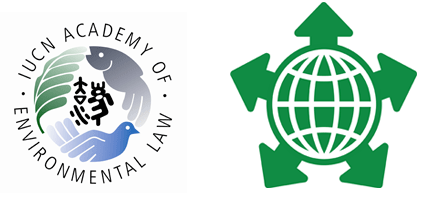Location
Room 205
Start Date
4-7-2012 1:15 PM
End Date
4-7-2012 2:45 PM
Description
Genetic modification in plant cells in the early 80´s allowed Biotechnology to introduce characteristics in plants creating stronger crops (compared to the ones created by conventional breeding) to be used in different sectors: Agriculture, Fisheries, Food Production and Industry. A new technology was developed to face the upcoming global challenges: climate change, overpopulation, erosion, and a new socio-economic environment.
This new technology is subject to international regulations to ensure environmental sustainability of crop production on the basis of which genetically modified organisms have to be assessed for safety before being released in to the environment or on the market. Although there is a wide range of biotechnology legislation applying to the use of GMO’s in order to implement the Cartagena Protocol on Biosafety to the Convention on Biological Diversity, legislation is not uniform. In the European Union, the Precautionary Principle or Precautionary Approach is one of the major legal arguments originating law conflicts within third states. For example, the alleged general EC moratorium on approvals of biotech products (Dispute DS291) brought by the United States and other third countries to the WTO triggered strong disagreements between these two major trade partners. As a result, there was not only an adoption of an extensive review over all the EU legislation policies on gmo’s regardless the new EU rules to approve GM products agreed in 2004.
The European Union has developed research programs and practices to evaluate risks and benefits to the environment of GMOs; on the basis of the Precautionary approach (Article 191 (2) of Treaty on the Functioning of the European Union) and under its secondary law, specifically on its Environmental Liability Directive (Directive 2004/35EC); as an early conclusion, it is clear that, the interaction between law and policies on the Precautionary Principle will continue to be contentious; the purpose of this research is: 1) To demonstrate how this important legal principle, has been shaping the legal approaches in the WTO and the European Union on regards of biosafety disputes and policies. 2) Determine the status quo of the existing biosafety regulations in the European Union and identify the initiatives and proposals from the EU Institutions and other organisms towards effective and uniform regulations.
Presentation
Included in
Sustainable Regional Legal Experiences in Biotechnology in the European Union
Room 205
Genetic modification in plant cells in the early 80´s allowed Biotechnology to introduce characteristics in plants creating stronger crops (compared to the ones created by conventional breeding) to be used in different sectors: Agriculture, Fisheries, Food Production and Industry. A new technology was developed to face the upcoming global challenges: climate change, overpopulation, erosion, and a new socio-economic environment.
This new technology is subject to international regulations to ensure environmental sustainability of crop production on the basis of which genetically modified organisms have to be assessed for safety before being released in to the environment or on the market. Although there is a wide range of biotechnology legislation applying to the use of GMO’s in order to implement the Cartagena Protocol on Biosafety to the Convention on Biological Diversity, legislation is not uniform. In the European Union, the Precautionary Principle or Precautionary Approach is one of the major legal arguments originating law conflicts within third states. For example, the alleged general EC moratorium on approvals of biotech products (Dispute DS291) brought by the United States and other third countries to the WTO triggered strong disagreements between these two major trade partners. As a result, there was not only an adoption of an extensive review over all the EU legislation policies on gmo’s regardless the new EU rules to approve GM products agreed in 2004.
The European Union has developed research programs and practices to evaluate risks and benefits to the environment of GMOs; on the basis of the Precautionary approach (Article 191 (2) of Treaty on the Functioning of the European Union) and under its secondary law, specifically on its Environmental Liability Directive (Directive 2004/35EC); as an early conclusion, it is clear that, the interaction between law and policies on the Precautionary Principle will continue to be contentious; the purpose of this research is: 1) To demonstrate how this important legal principle, has been shaping the legal approaches in the WTO and the European Union on regards of biosafety disputes and policies. 2) Determine the status quo of the existing biosafety regulations in the European Union and identify the initiatives and proposals from the EU Institutions and other organisms towards effective and uniform regulations.

